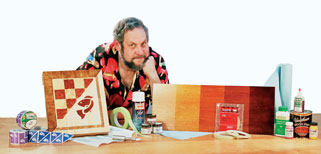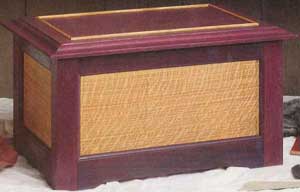
That’s been the question since woodworkers darkened oak by burying it in a pile of dung and urine. We have more pleasant choices these days. Stain and dye formulations have been made from ground earth, colored clays, acids, bases, plant extracts, coffee, tea, fruits, berries and, these days, from sophisticated synthesized colorants.
That means we can stain wood whatever color we like. Or not. Admittedly, there are plenty of times I favor leaving wood au naturel. However, there are also times when stain can do a world of good, and make my work greener to boot.
For one thing, stain lets you get the exact color of wood you want, even if the tree, or your limited budget for flashy wood, won’t cooperate. I’ve often made easily available wood look like its more expensive or ecologically unsound relative. Stained alder can be made to look like cherry, fruitwood like mahogany, poplar like walnut, birch like zebrawood, mahogany like rosewood and maple like ebony. At times I’ve turned wood colors that simply were not available at the lumberyard, like emerald green or fuchsia.
I’ve also pressed stain into service to solve problems, blending sapwood to its adjacent hardwood, hiding repairs when even the same type of wood is not exactly the right color match, and even making new wood appear to be nicely aged by the sun. Glazes, which are just thicker stain formulas sometimes used after a sealer coat, can make new wood look old, dirty, antiqued, pickled or as though the piece was once partially stripped and rejuvenated by loving hands at home.
Truth be told, I’ve also dabbled in fakery. I’ve made plain birch look like burl, added bird’s-eyes or curl to maple, and slipped in sweeping cathedrals of fake grain to add interest. I’ve even created fake inlays and cross bands using contrasting stain and glaze.
I know what you’re thinking. All too often staining makes wood look duller, muddier or, frankly, less attractive. But it does not have to be that way. With the right stains, and the right skills, stain can eliminate problems and add color without dulling wood’s beauty.
Just how does one do that? Perhaps that’s a good topic for another blog entry.






